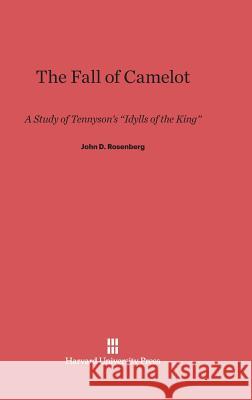The Fall of Camelot » książka
The Fall of Camelot
ISBN-13: 9780674422933 / Angielski / Twarda / 1973 / 198 str.
The "Idylls of the King" is one of the indisputably great long poems in the English language. Yet Tennyson's doom-laden prophecy of the fall of the West has been dismissed as a Victorian-Gothic fairy tale. John D. Rosenberg maintains that no poem of comparable magnitude has been so misread or so maligned in the twentieth century as Tennyson's symbolist masterpiece.
In "The Fall of Camelot" the author calls into question the modernist orthodoxy that rejects all of Victorian poetry as a Waste Land and ignores the overriding importance of Tennyson to the development of Yeats, T. S. Eliot, and the symbolists. Far from being an escapist medieval charade, the "Idylls" offers an apocalyptic prevision of the nightmare of modern history. Concealed under the exquisitely romantic surface of the verse is a world of obsessive sensuality and collapsing values that culminates in the "last dim weird battle the West." Perhaps the subtlest anatomy of the failure of ideality in our literature, the "Idylls" is not only about hazards of mistaking illusion for reality; it dramatically enacts those dangers, ensnaring the reader in the same delusions that maim and destroy the characters.
Rosenberg shows that Tennyson has created a new genre whose true originality criticism has yet to perceive. By employing landscape as a symbolic extension of character, Tennyson obliterates the gap between self and scene and frees himself from bondage to conventional narration.
Throughout the "Idylls" character cannot be extricated from setting or symbol, and neither has substance apart from the narrative in which it is enmeshed. In essence, the narrative is a sequence of symbols protracted in time, the symbolism a kind of condensed narration.
"Timescape" in the "Idylls," like landscape, serves to bind all events of the poem into a continuous present. Arthur is at once a Christ figure and Sun-King whose career parallels that of his kingdom, waxing and waning with the annual cycle. At the heart of Arthur's story lies the dual cycle of his passing and promised return. Incorporating this cycle into its structure, the "Idylls" is itself a kind of literary second coming of Arthur, a resurrection in Victorian England of the long sequence of Arthuriads extending back before Malory and forward through Spenser, Dryden, Scott, and Tennyson.











